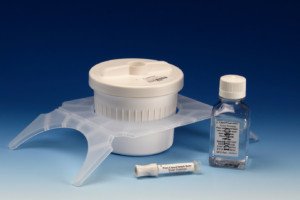
If you have colon cancer, would a CT scan show it?
“CT scans are adept at locating pathology IN the abdomen or outside of the bowel,” says Sander R. Binderow, MD, FACS, FASCRS, with Atlanta Colon & Rectal Surgery.
Dr. Binderow continues, “CT is very good for solid organ disease — liver, spleen, kidneys. It can show metastatic colon cancer that has spread to the liver.
“Colon cancer, however, starts inside of the bowel. CT is notoriously unreliable for polyps or early stage tumors. It can show large, more advanced cancers or masses.”
So for instance, my father went to the ER complaining of significant lower abdominal pain and a persistent feeling of constipation.
The doctor ordered a CT scan and at some point, she commented that it would be good news if the scan did not show an “obstruction,” as this could possibly be a malignant mass — having originated as colon cancer but having infiltrated outside of the colon where a CT scan would pick it up. (Turned out my father had diverticulitis.)
And even if a mass does indeed show up on a CT scan…this doesn’t mean it’s malignant.
Dr. Binderow explains, “If a CT is suspicious for a colorectal cancer, the next immediate step would be a colonoscopy — which again is the best test to evaluate the colon and find colon cancer.”

Colonoscopy
In the absence of a CT scan, if you’re just wondering about colon cancer and would like to get some initial screening for it, you may consider Cologuard, which is a non-invasive screening test for this disease.

Cologuard kit
Cologuard uses the latest advances in stool DNA technology — detecting the altered DNA from abnormal cells in a stool sample which could be associated with cancer or precancer.
Symptoms of Colon Cancer
Symptoms of this disease are as follows: After having a bowel movement, you feel as though the movement was incomplete and that there’s still more to void — but nothing more is eventually voided.
Unexplained constipation — struggling and straining to void, despite increased fiber and water intake and even the use of stool softeners.
Unexplained diarrhea is another sign. The diarrhea may alternate with the constipation.
Stools that are shaped like ribbons or pencils.
Blood in your feces. This can present as red or maroon stools, as well as tar-black stools.
Abdominal or back pain, or unexplained loss of body weight.
The above symptoms can also have benign causes such as irritable bowel syndrome (except for the blood) and Crohn’s disease.
Crohn’s disease can actually be detected by a CT scan, but remember, colon cancer cannot.
 Dr. Binderow performs minimally invasive, robotic and laparoscopic surgery for Crohn’s disease, ulcerative colitis, colon cancer and other colorectal conditions. Adept at routine procedures, he also sees patients with complex, atypical maladies.
Dr. Binderow performs minimally invasive, robotic and laparoscopic surgery for Crohn’s disease, ulcerative colitis, colon cancer and other colorectal conditions. Adept at routine procedures, he also sees patients with complex, atypical maladies.
 Lorra Garrick has been covering medical, fitness and cybersecurity topics for many years, having written thousands of articles for print magazines and websites, including as a ghostwriter. She is also a former ACE-certified personal trainer.
Lorra Garrick has been covering medical, fitness and cybersecurity topics for many years, having written thousands of articles for print magazines and websites, including as a ghostwriter. She is also a former ACE-certified personal trainer.
.
Top image: Shutterstock/Tyler Olson
Colon Cancer Diarrhea vs. IBS Diarrhea: Is There a Difference?
Hemorrhoid Blood vs. Colon Cancer Blood: Is There a Difference?









































